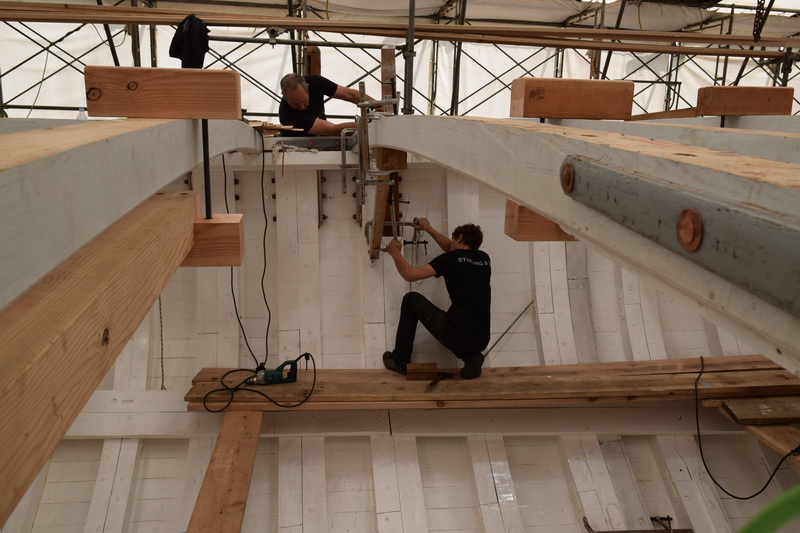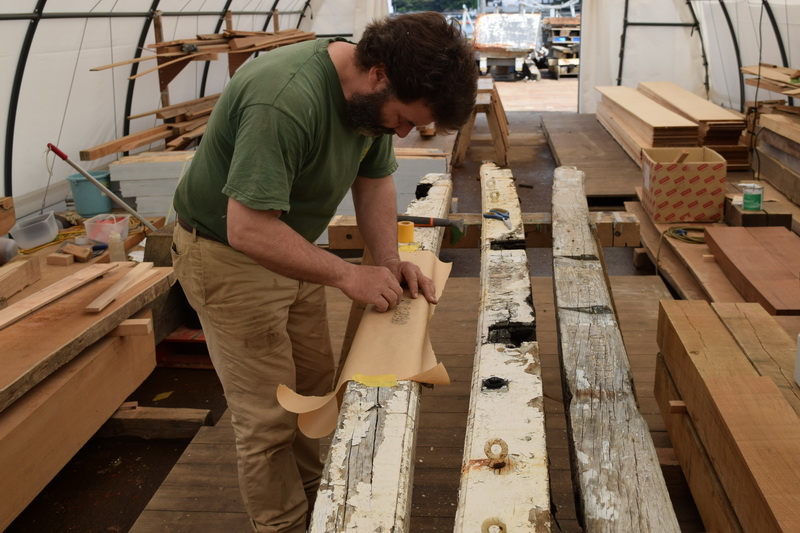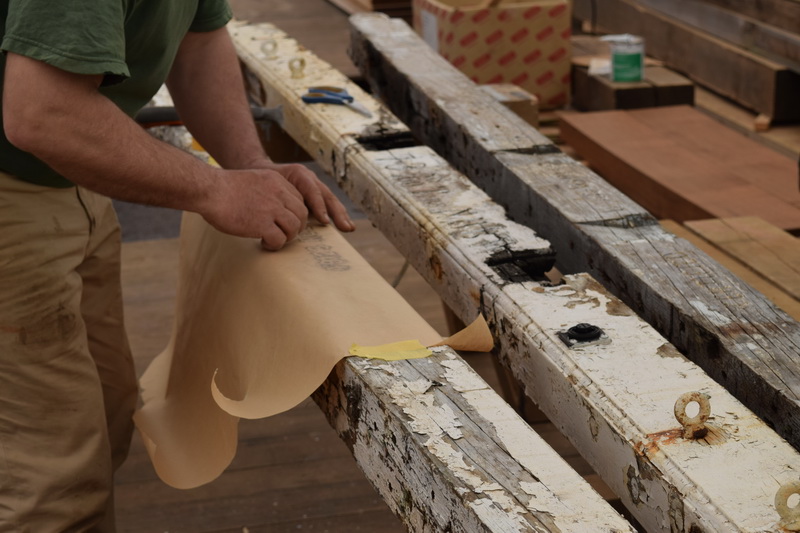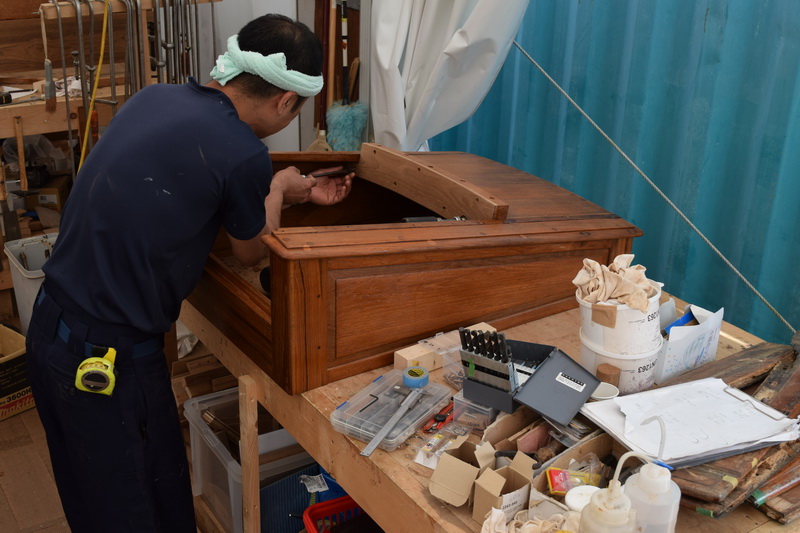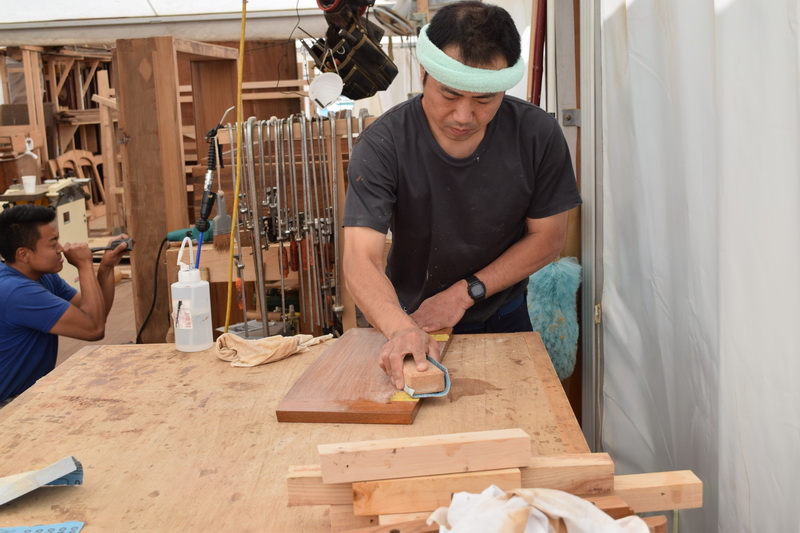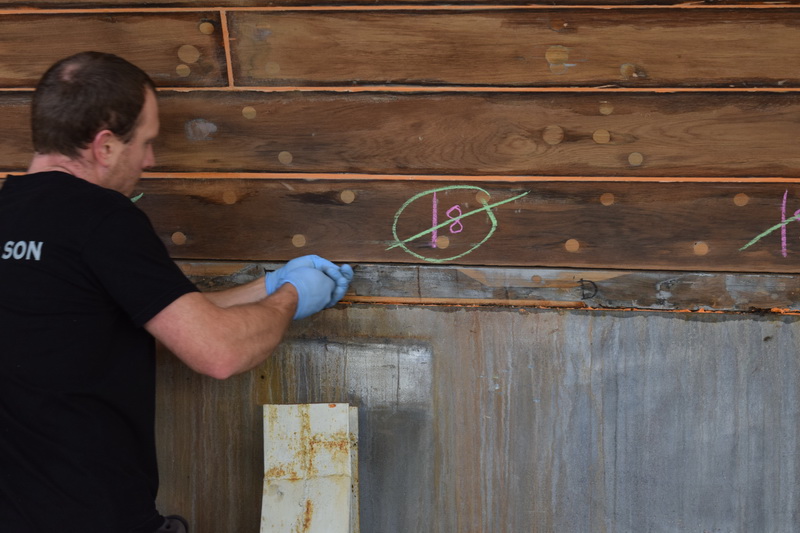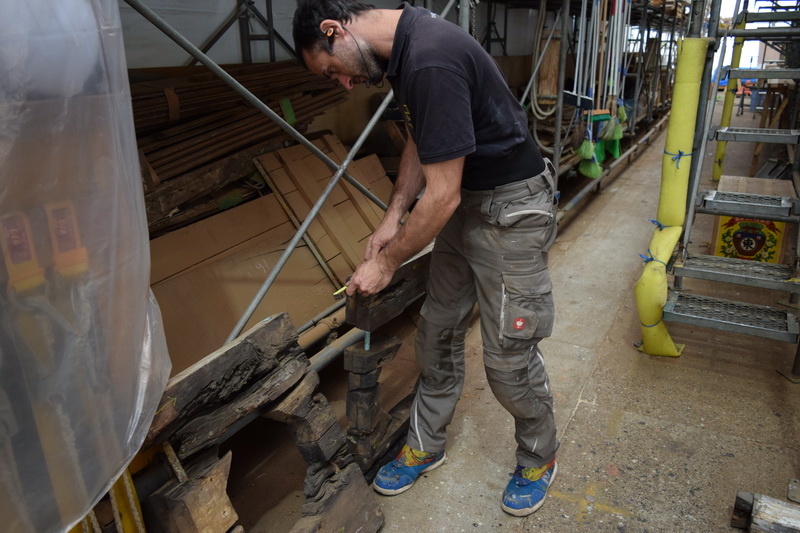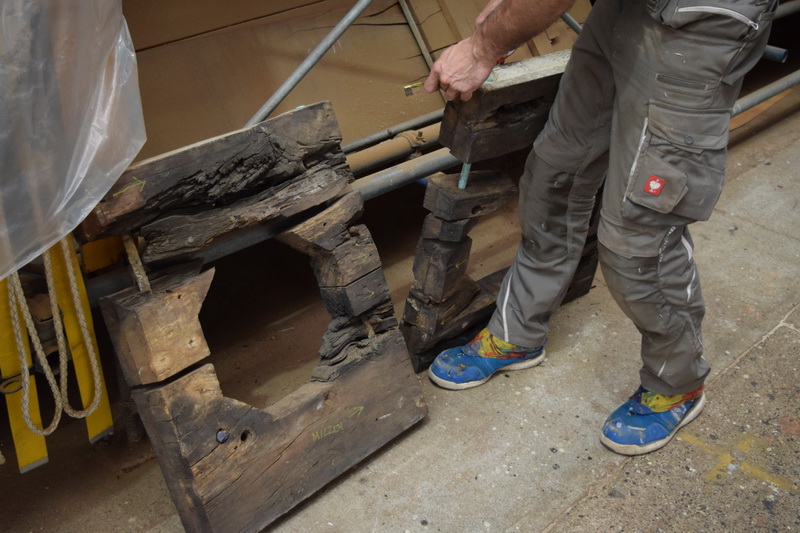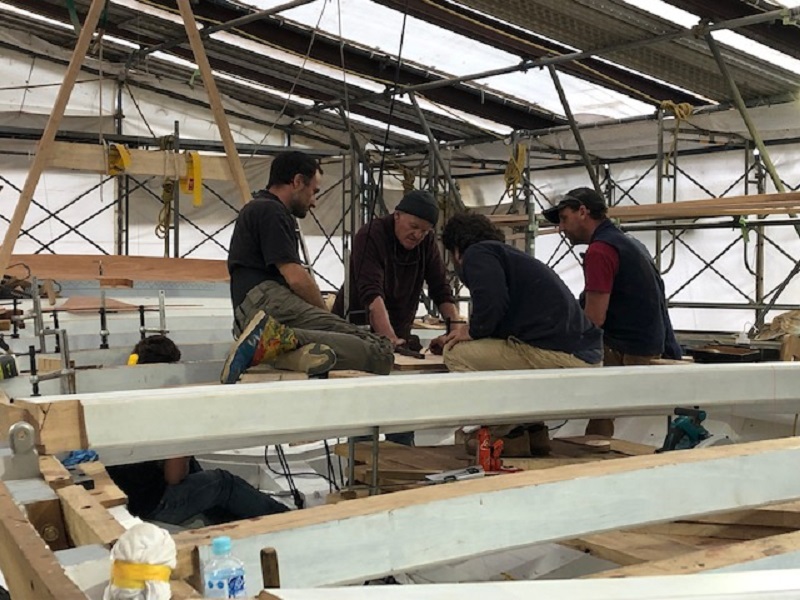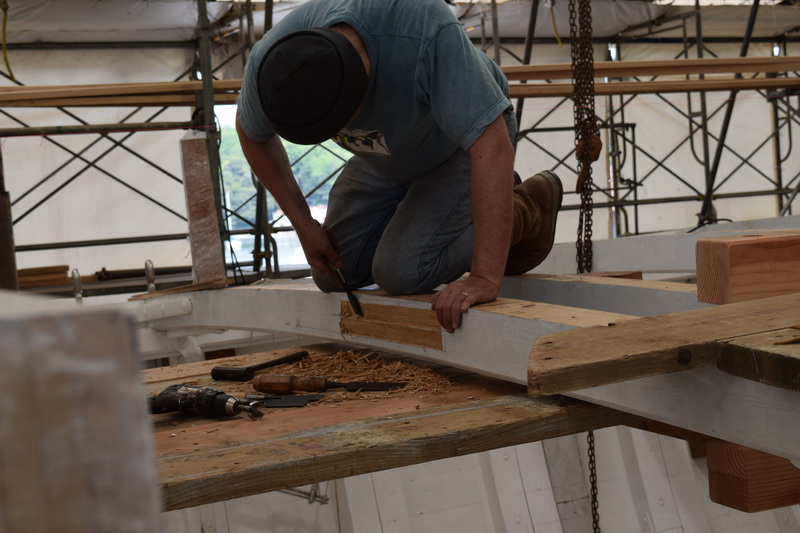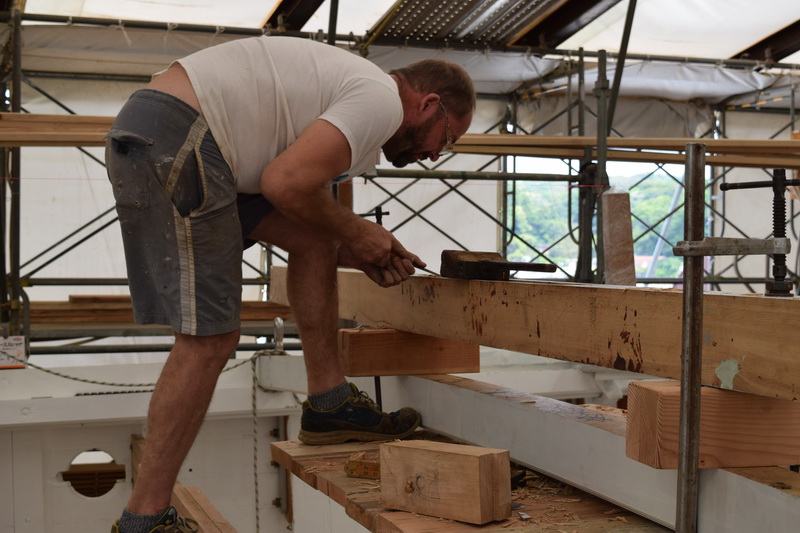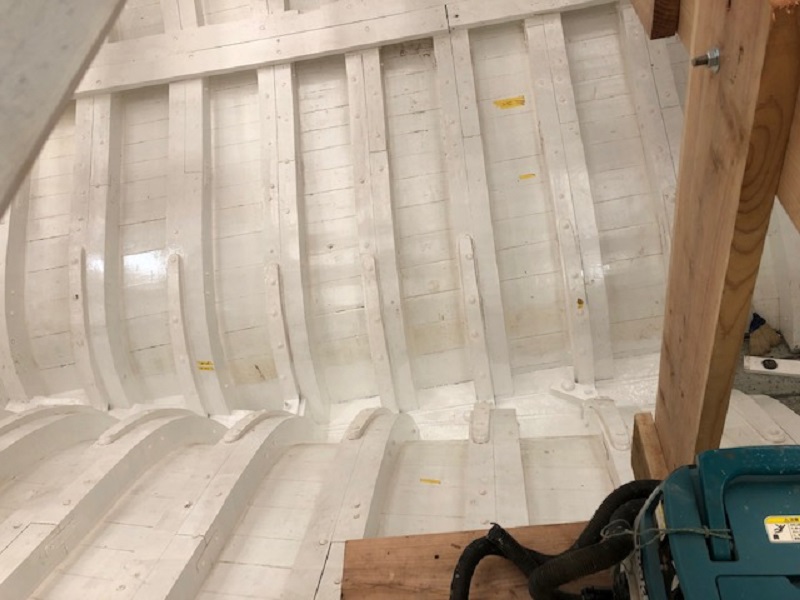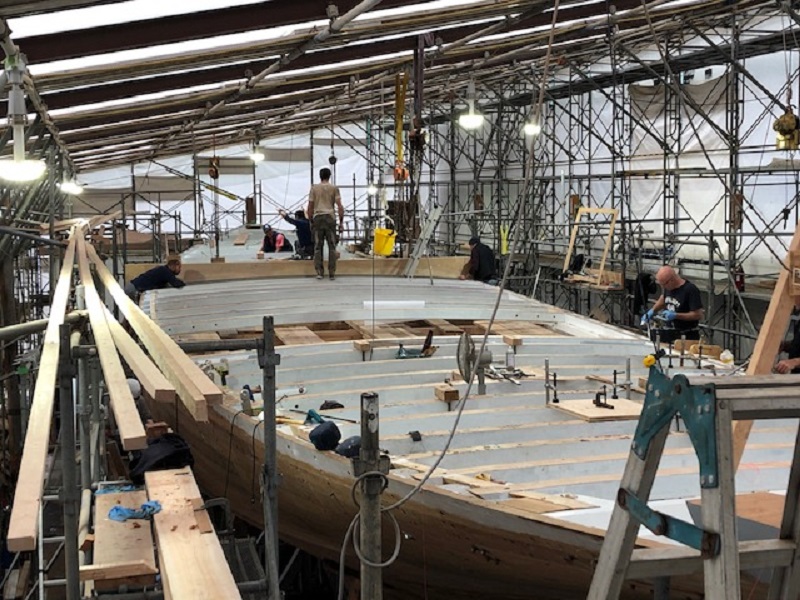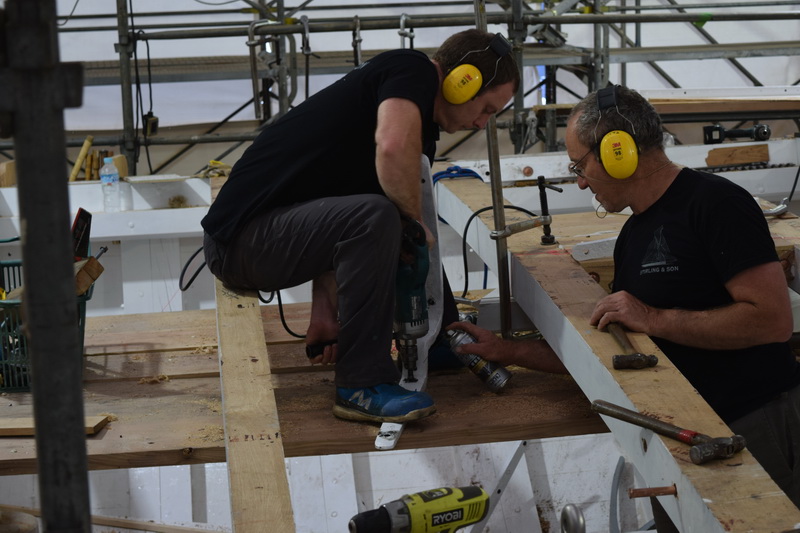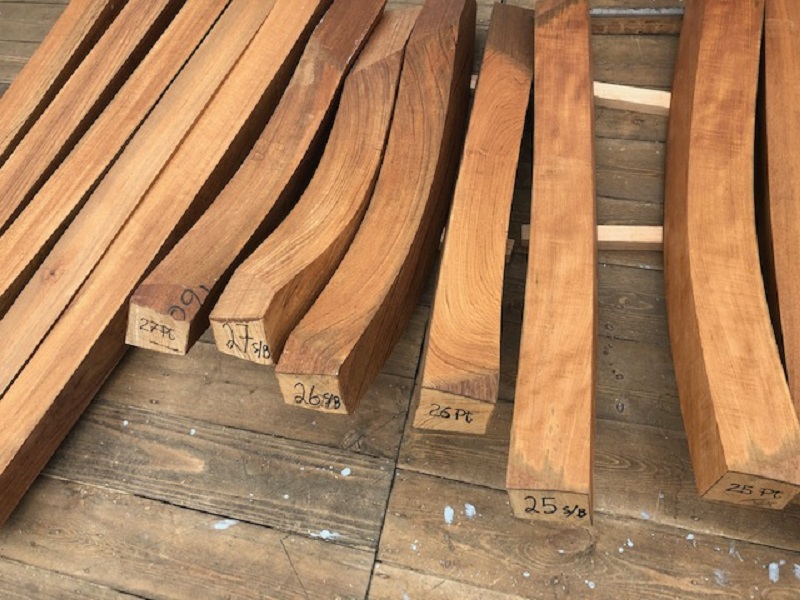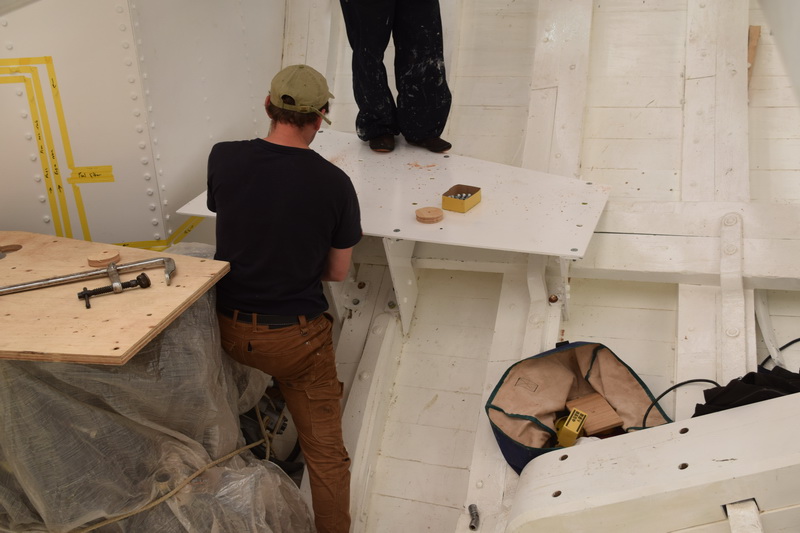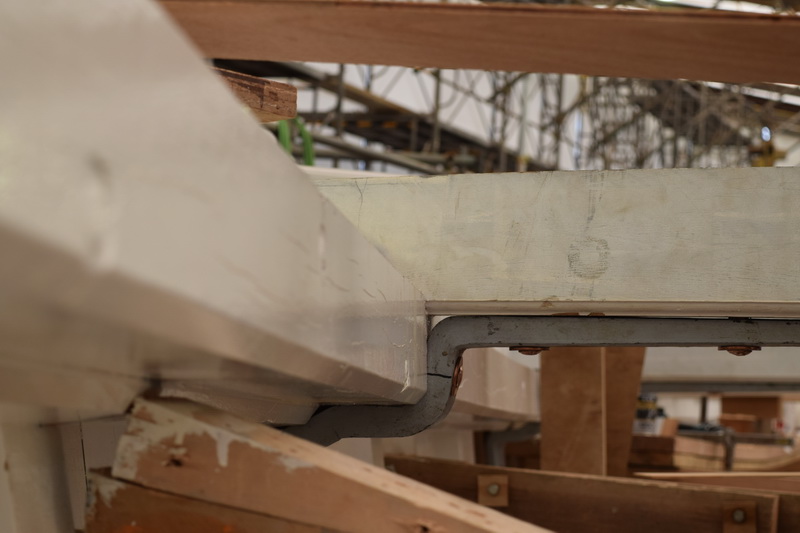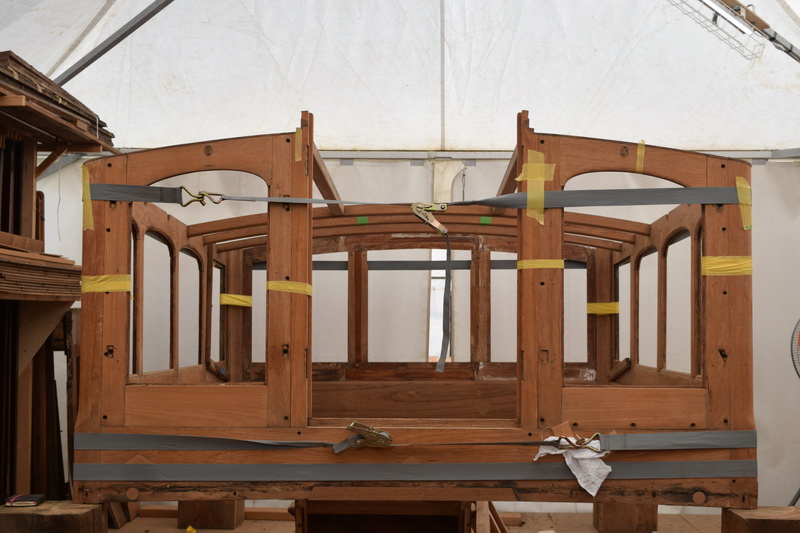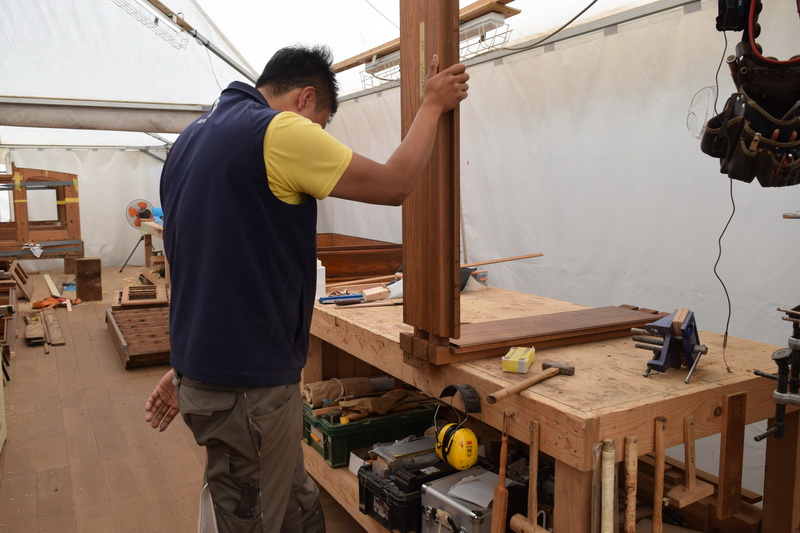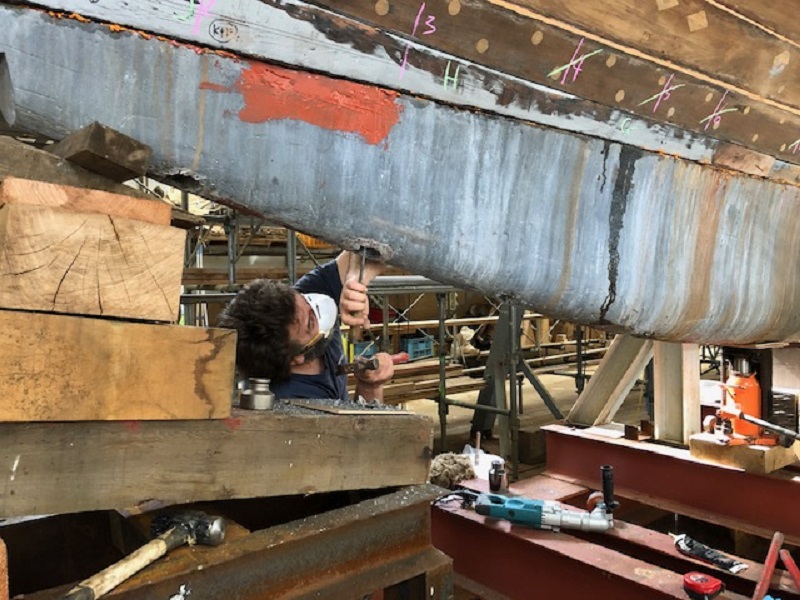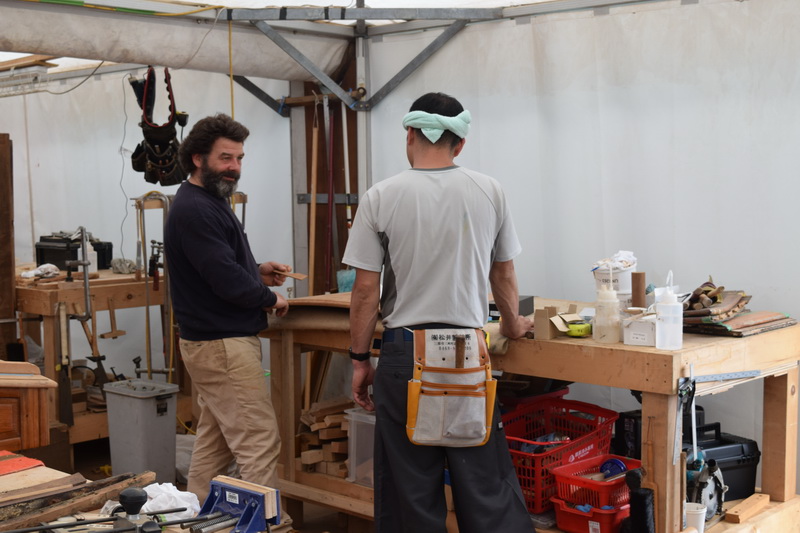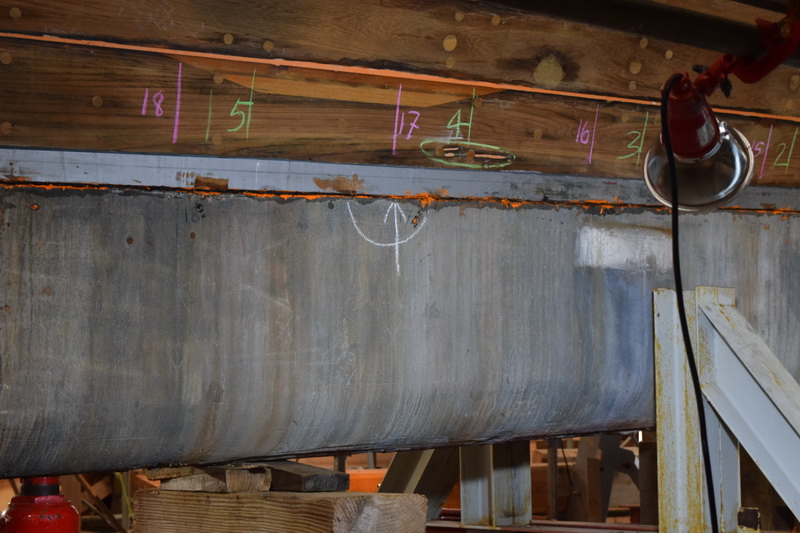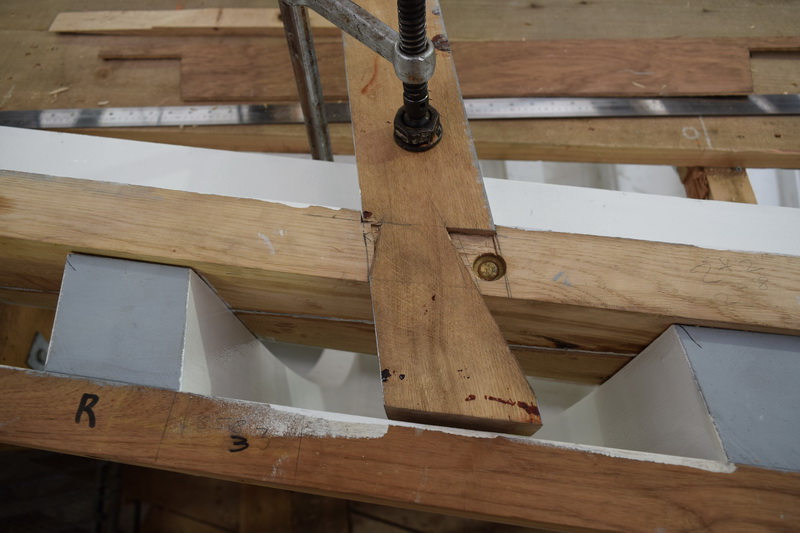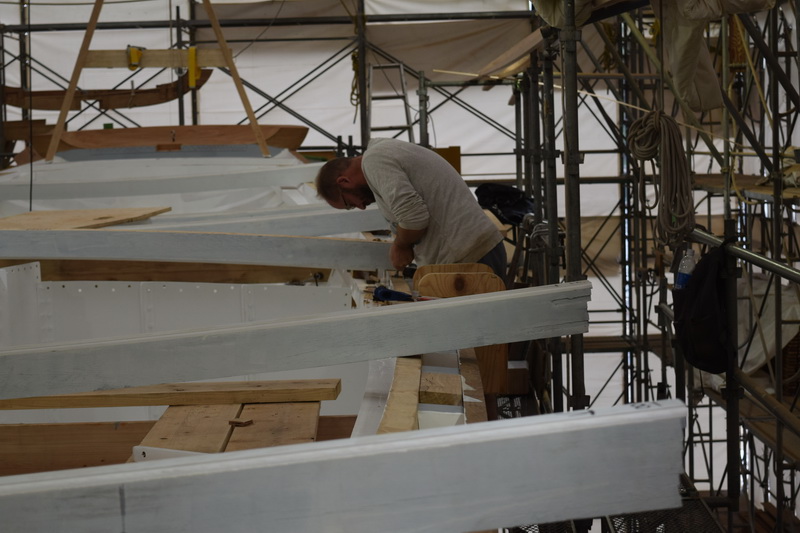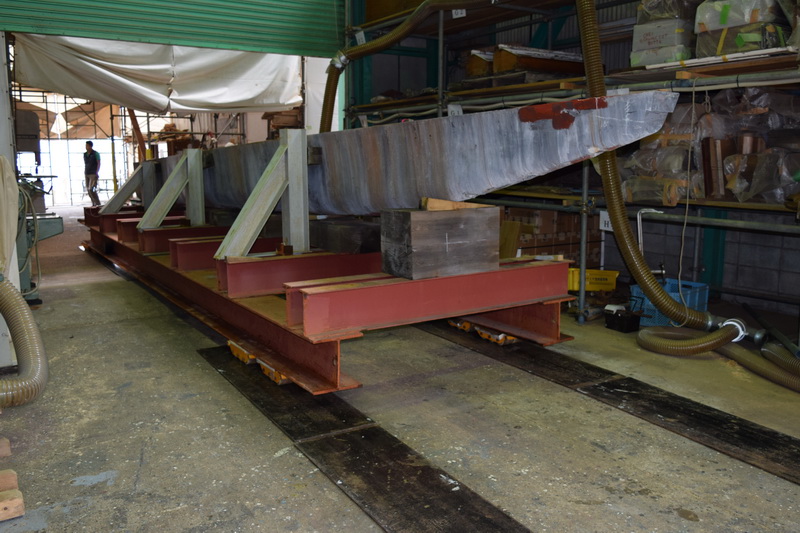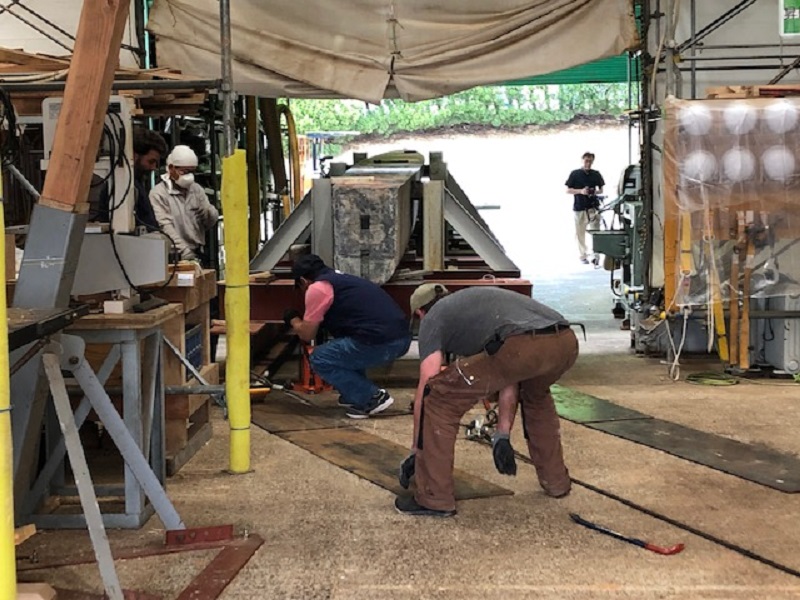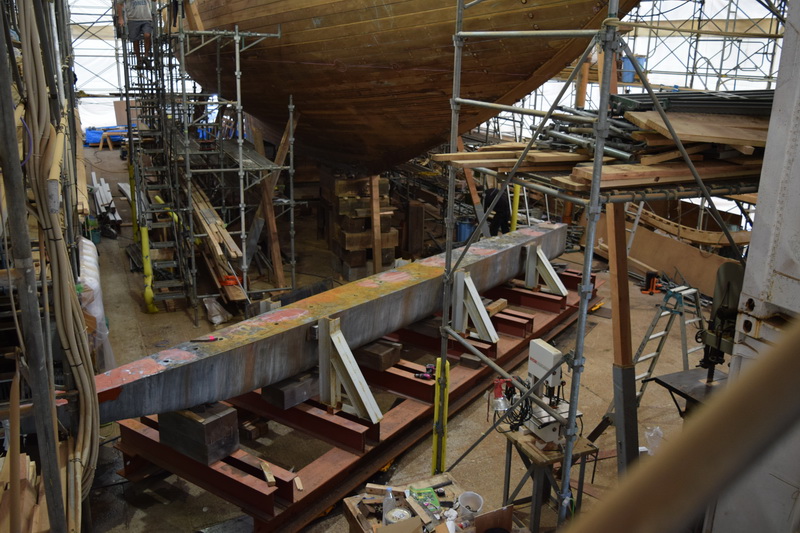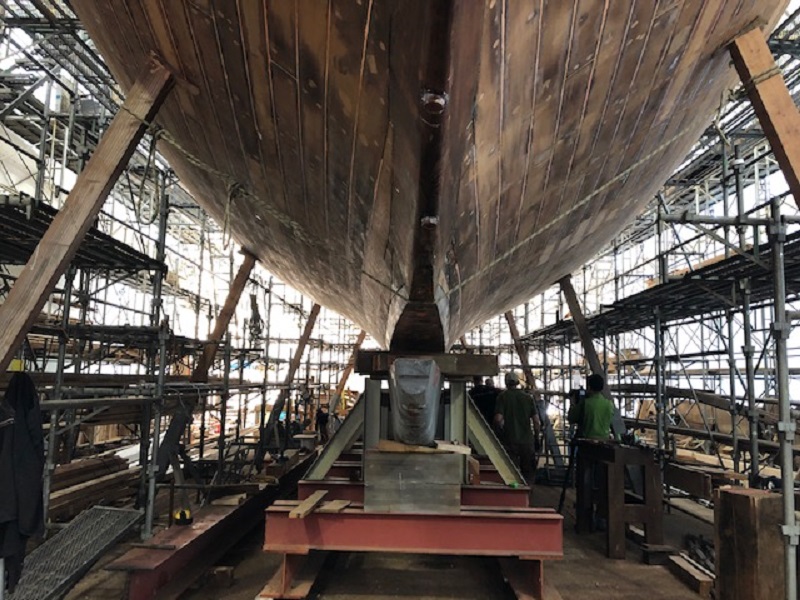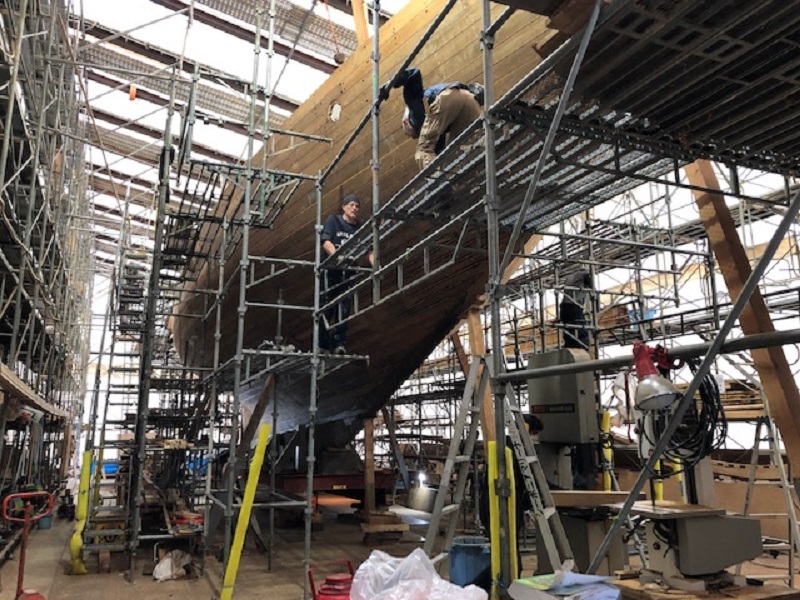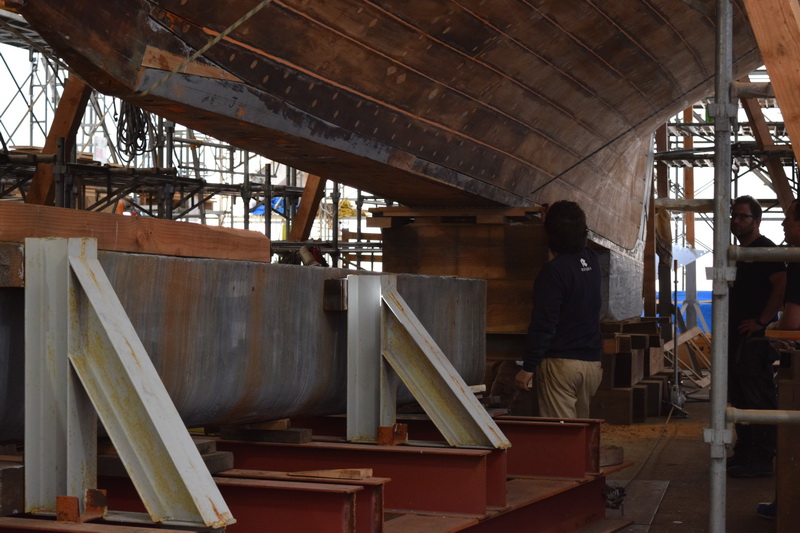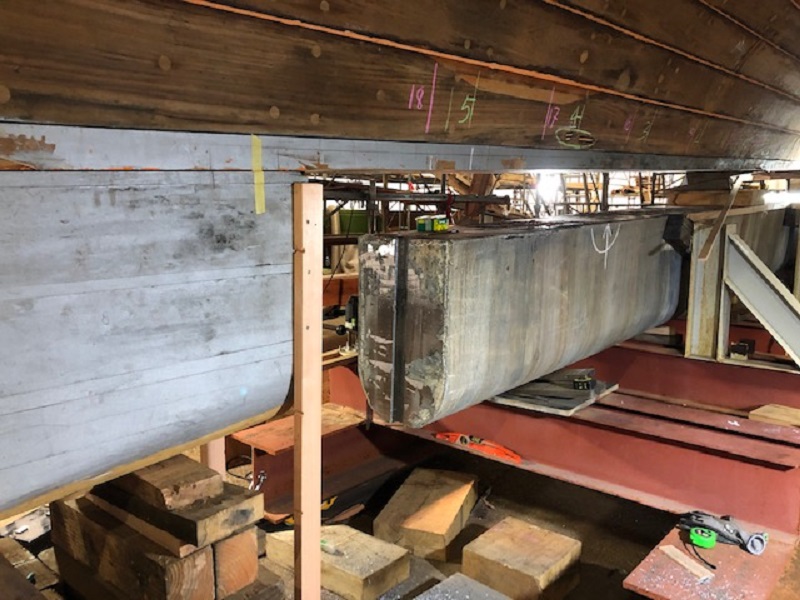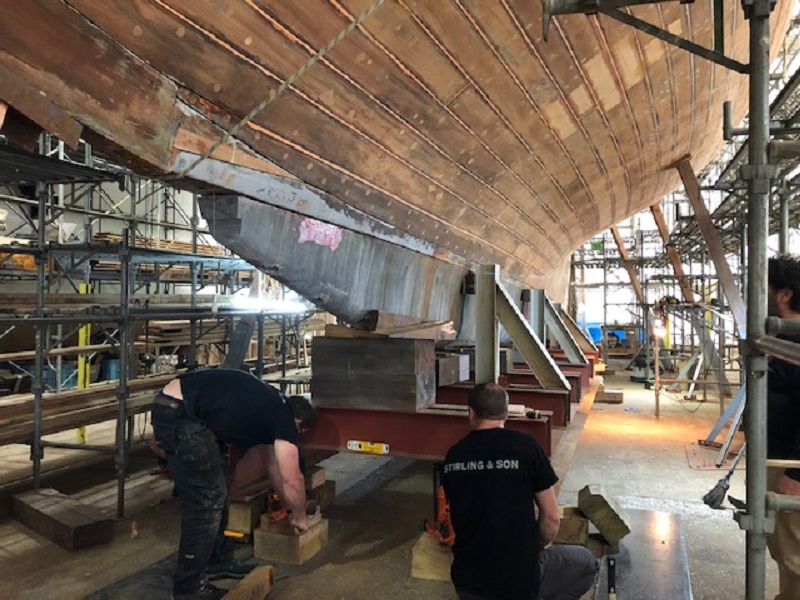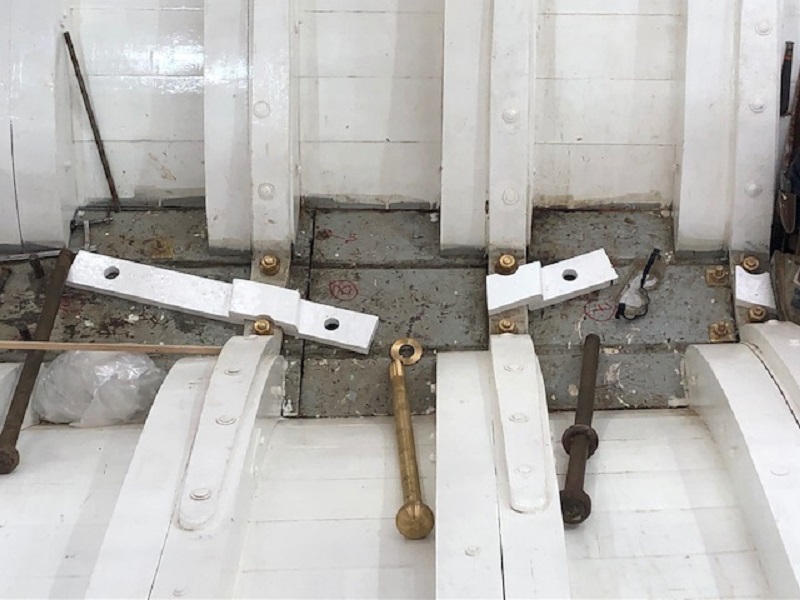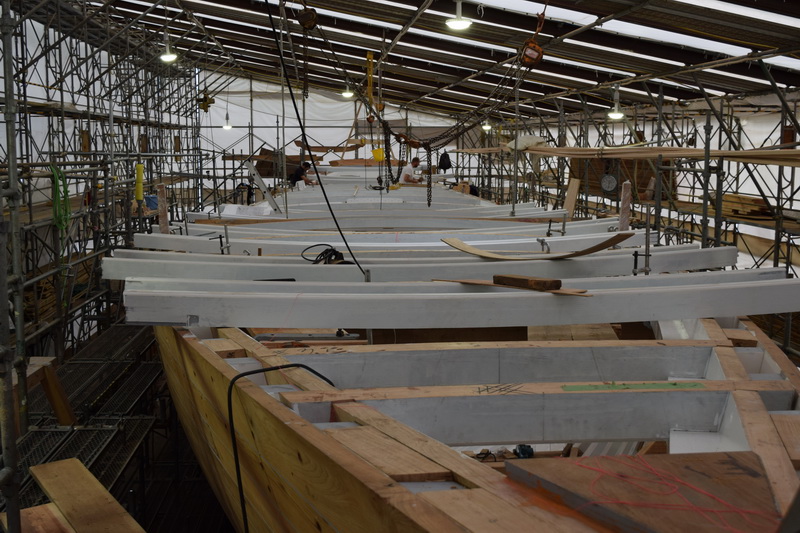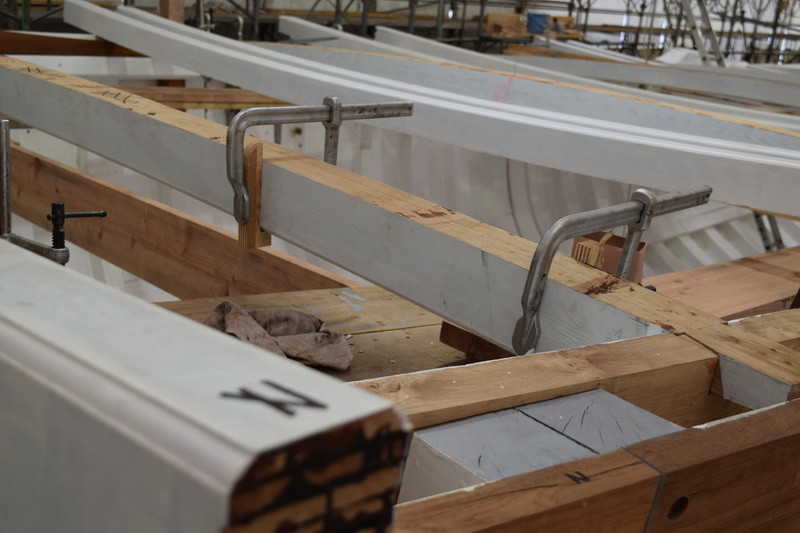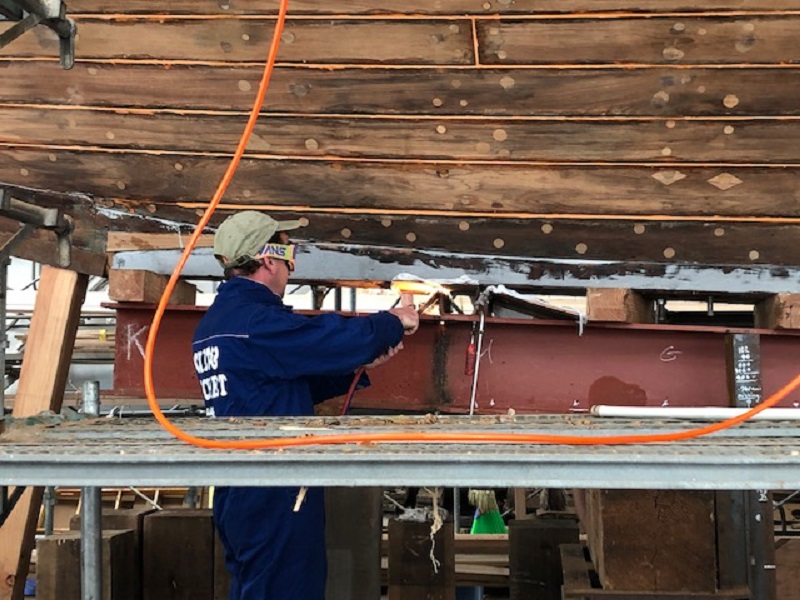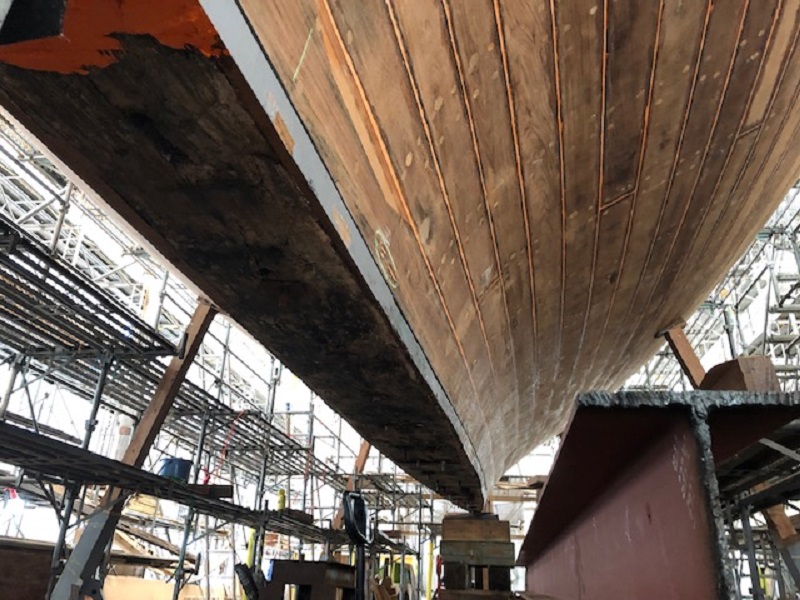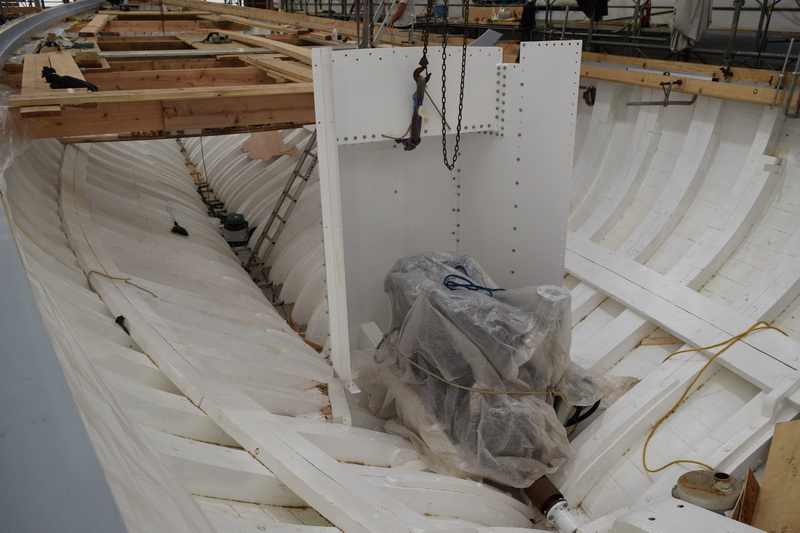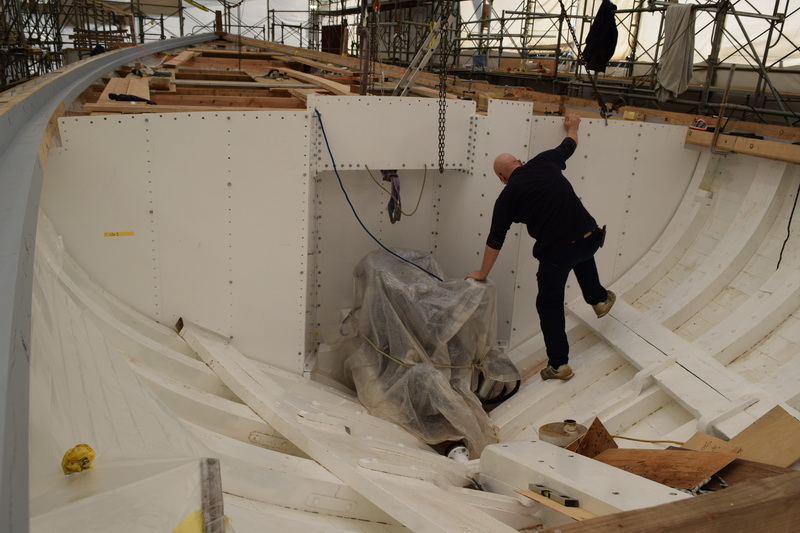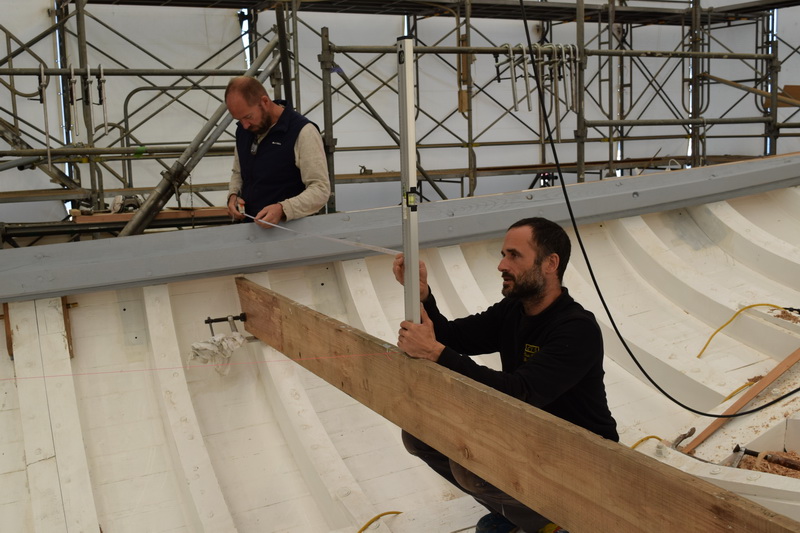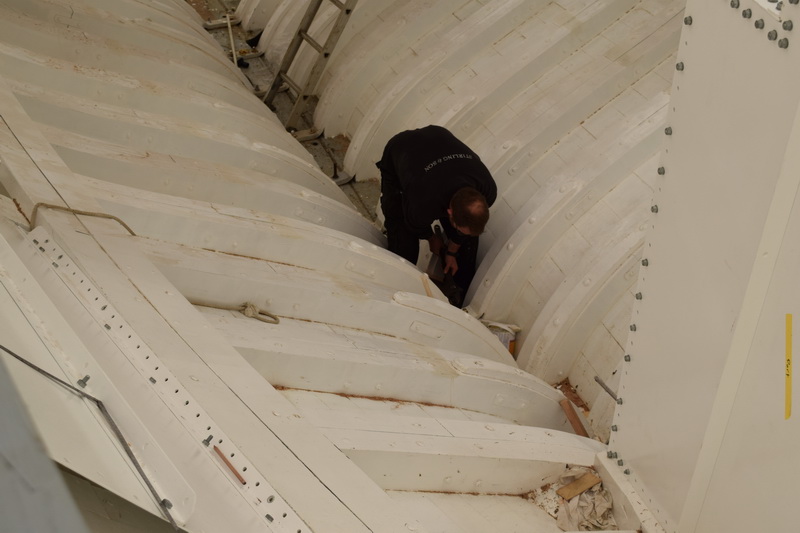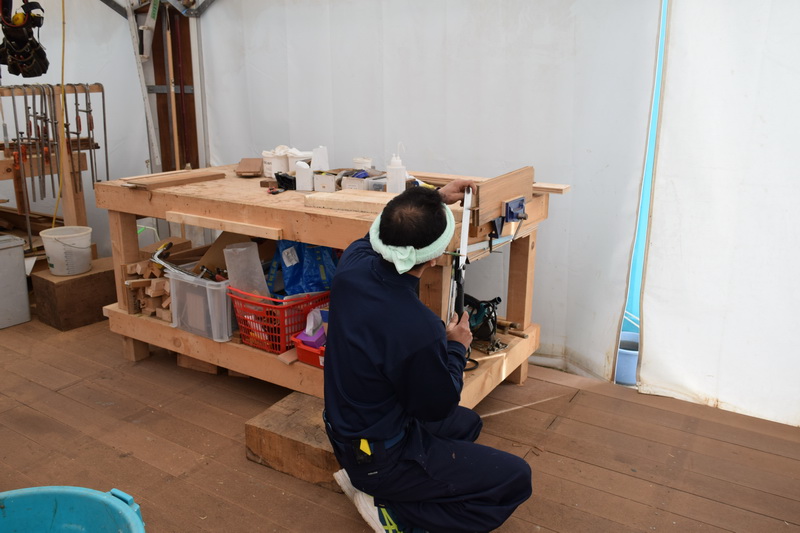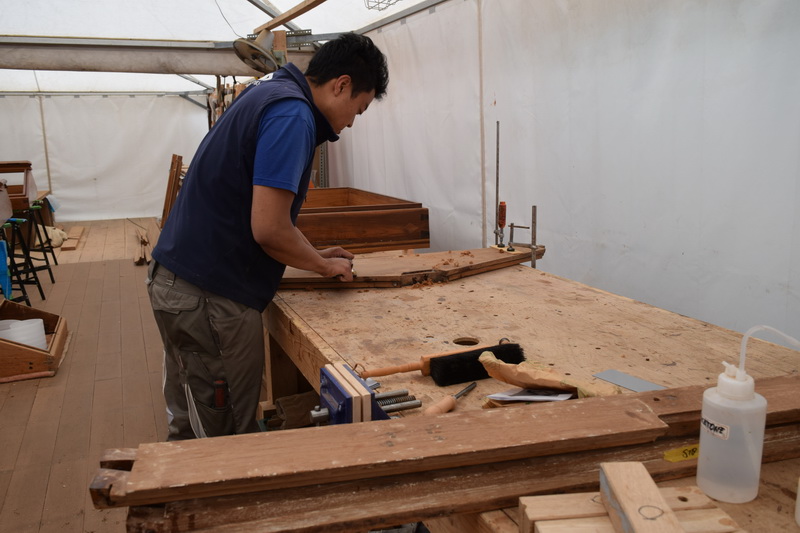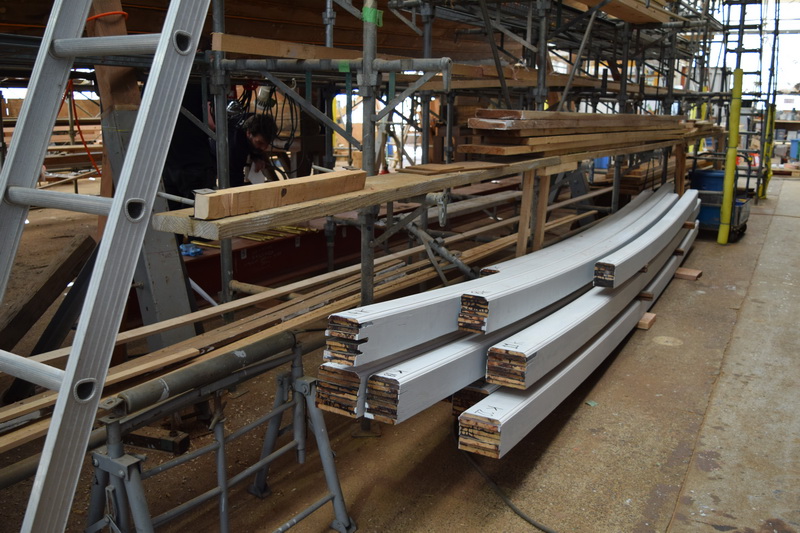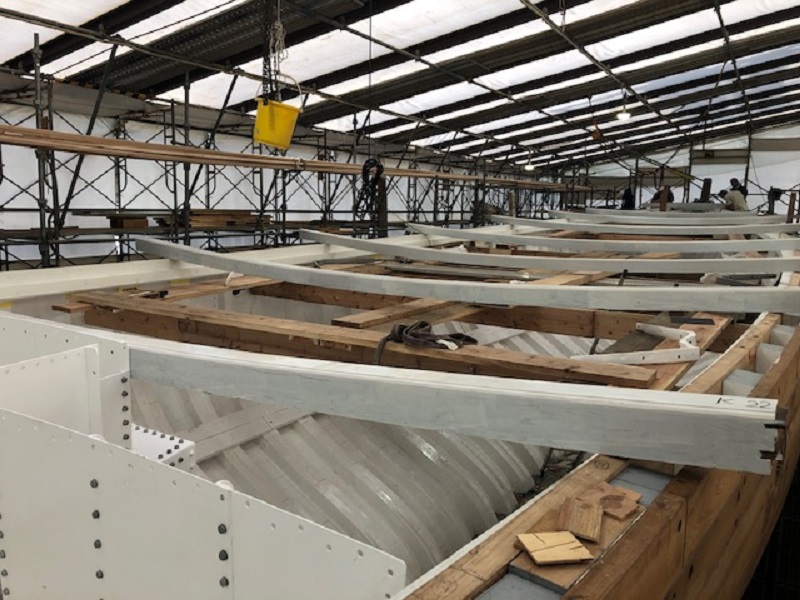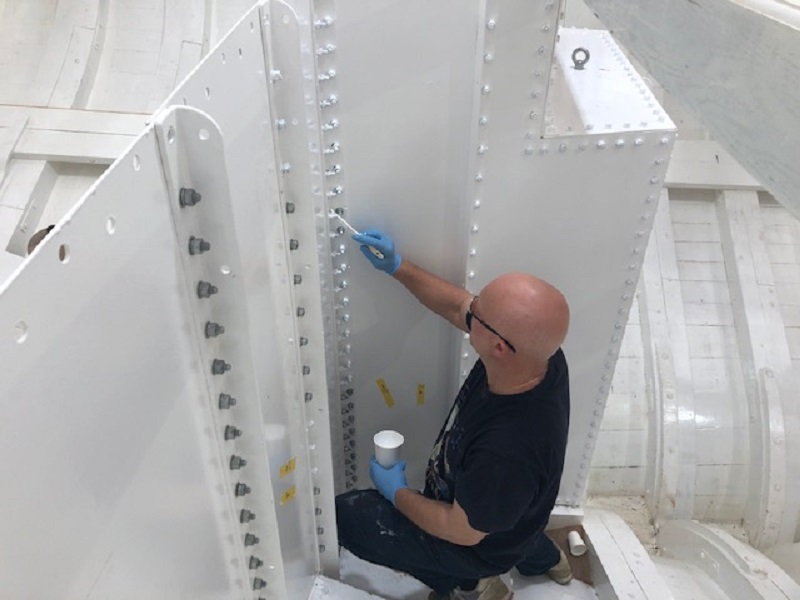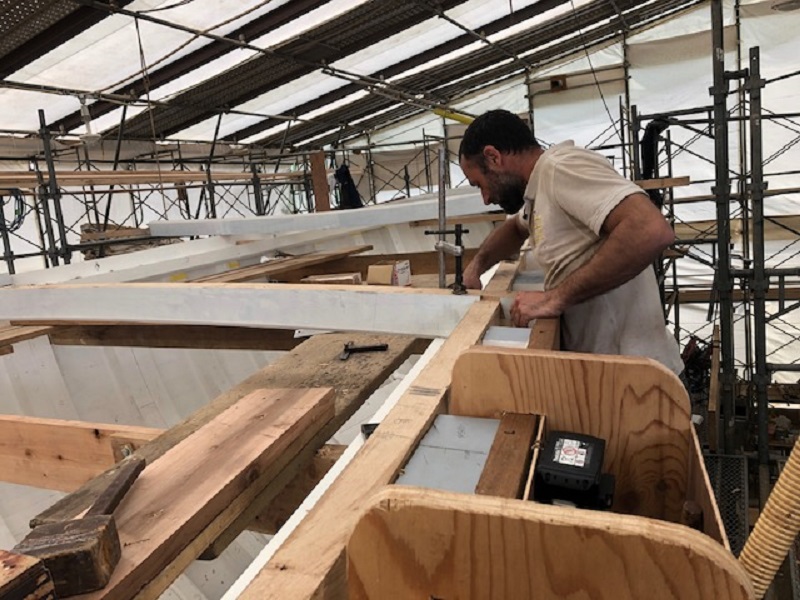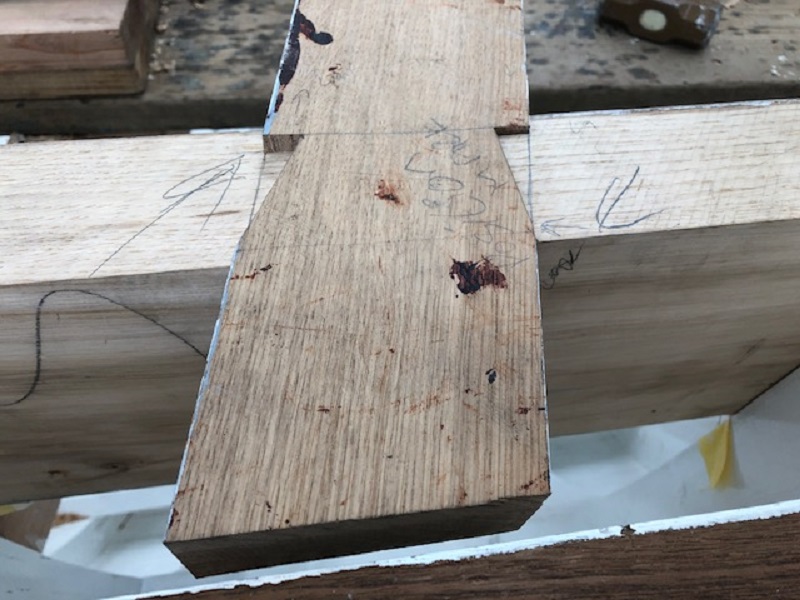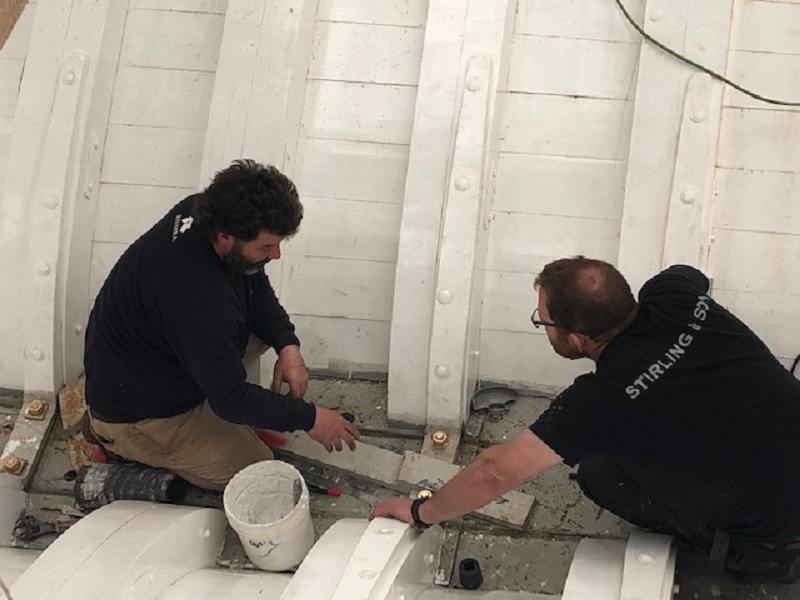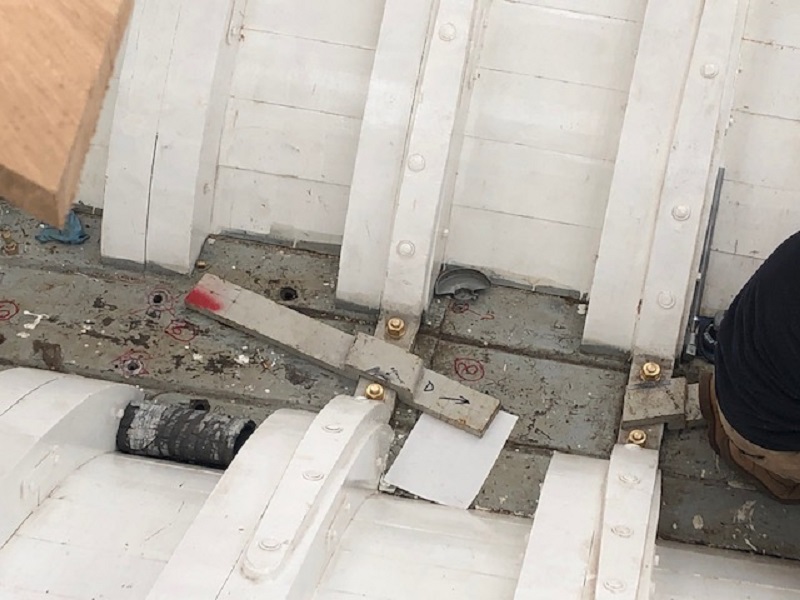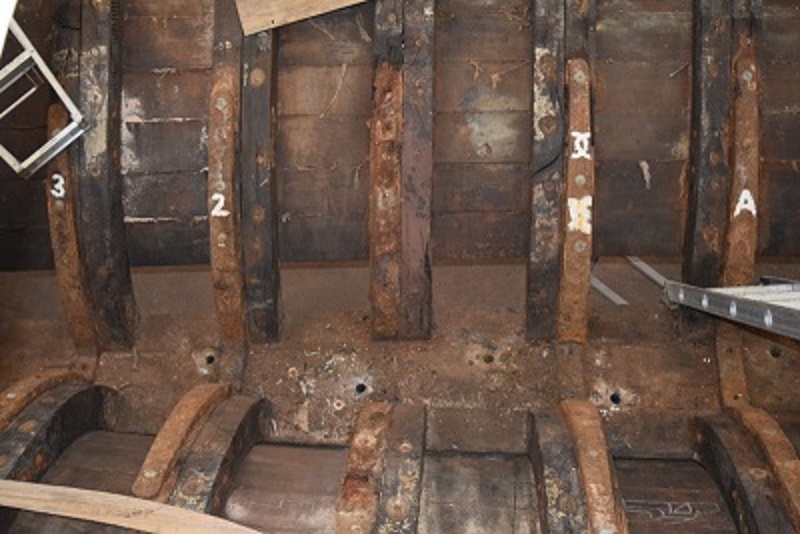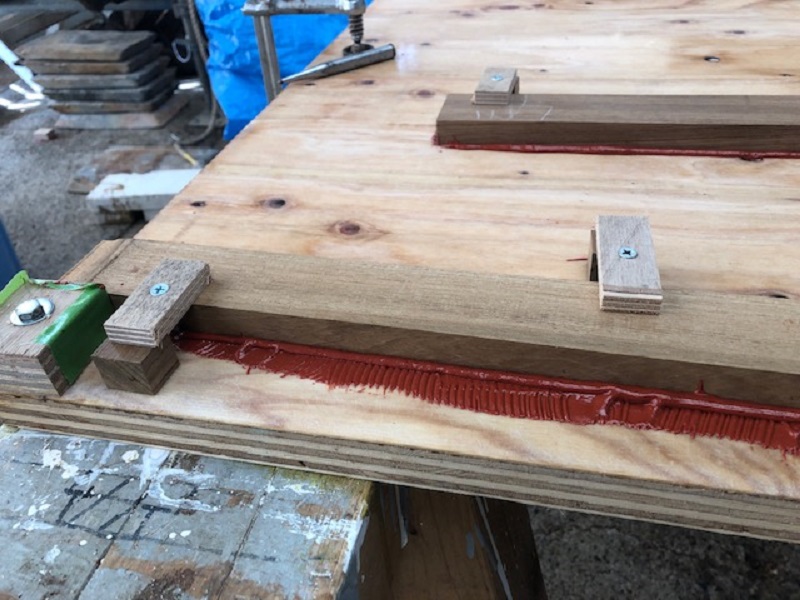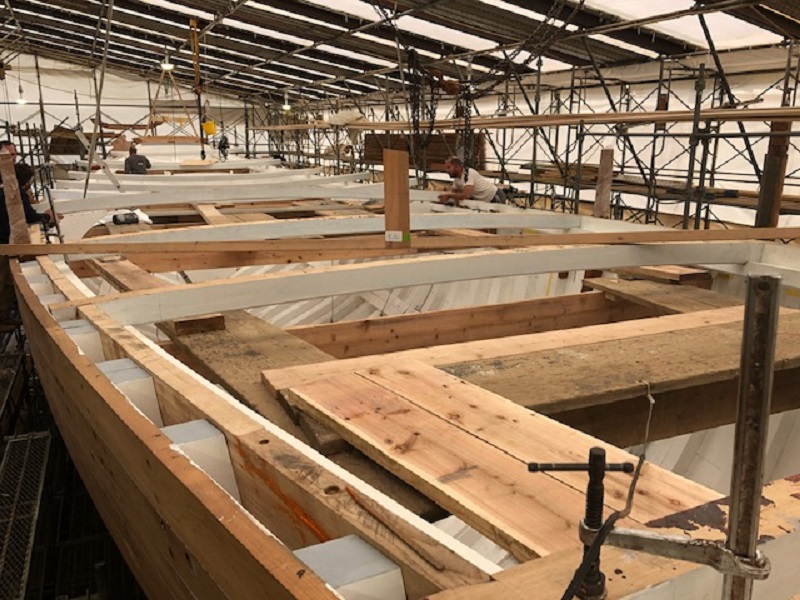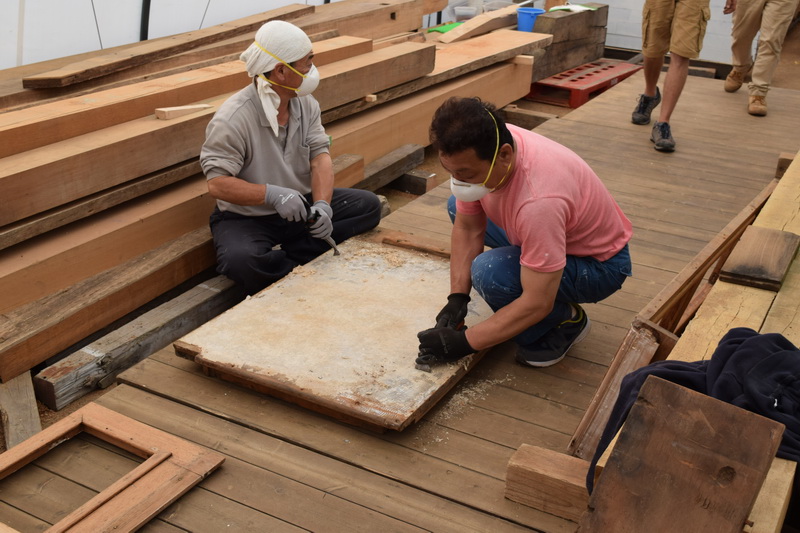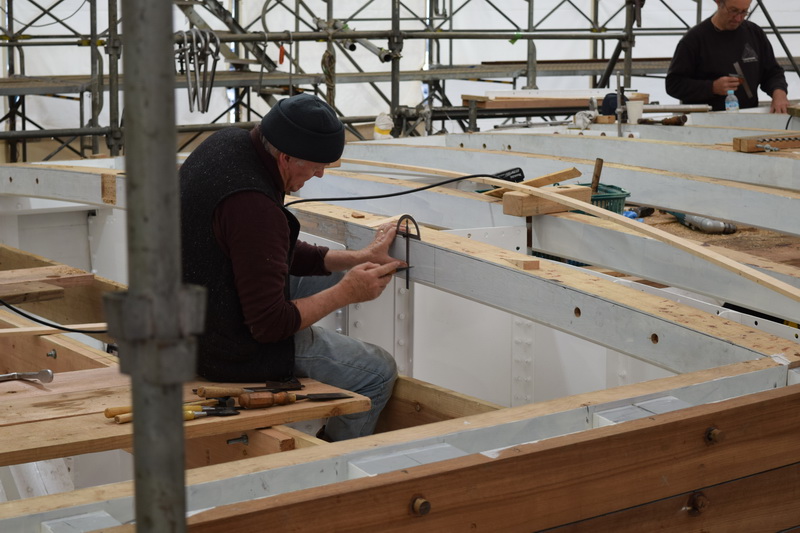
Blog — Wednesday , 22 May, 2019
Wednesday, May 15, 2019
Fitting carlings and partners.
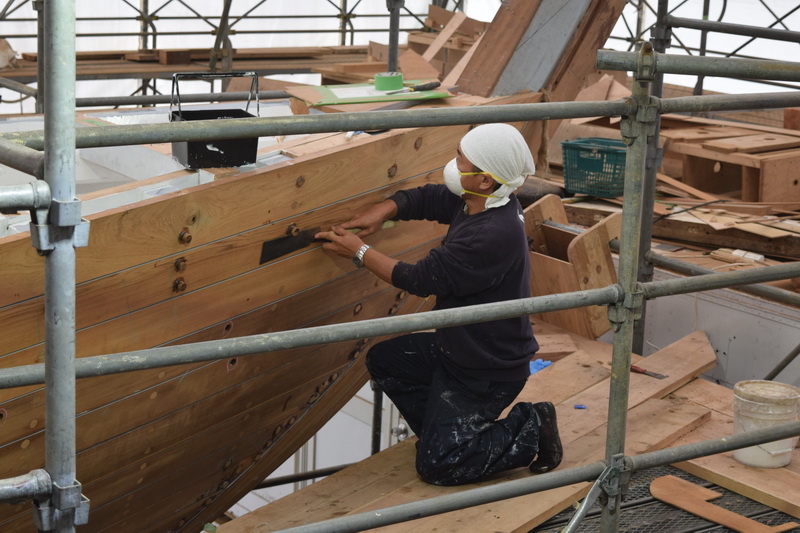
Makoto is cutting off the teak bungs flush with the hull planking.
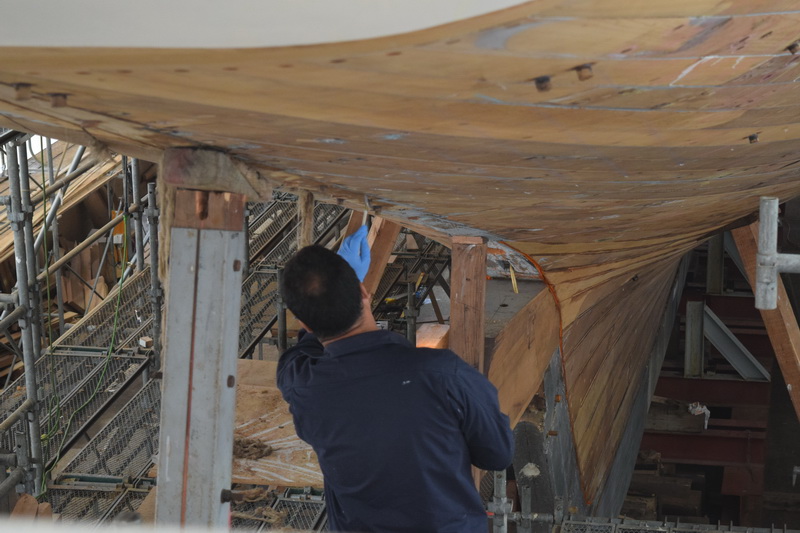
Fairing the planking at the counter, the overhanging part of the stern.
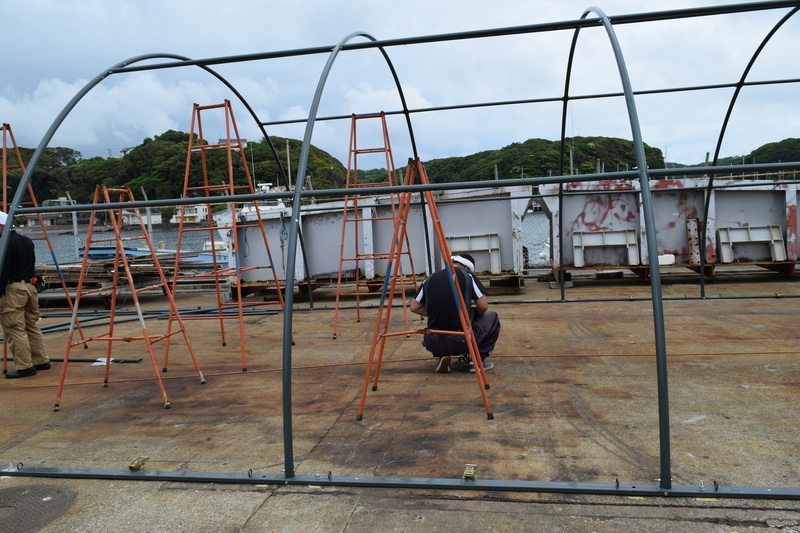
We heard that the masts recently left the UK and are headed our way, so we’ve begun construction of another tent that will house them and all the other hardware. Some of the rigging—wire, rope, etc.—is being shipped from Palma.
Thursday, May 16, 2019

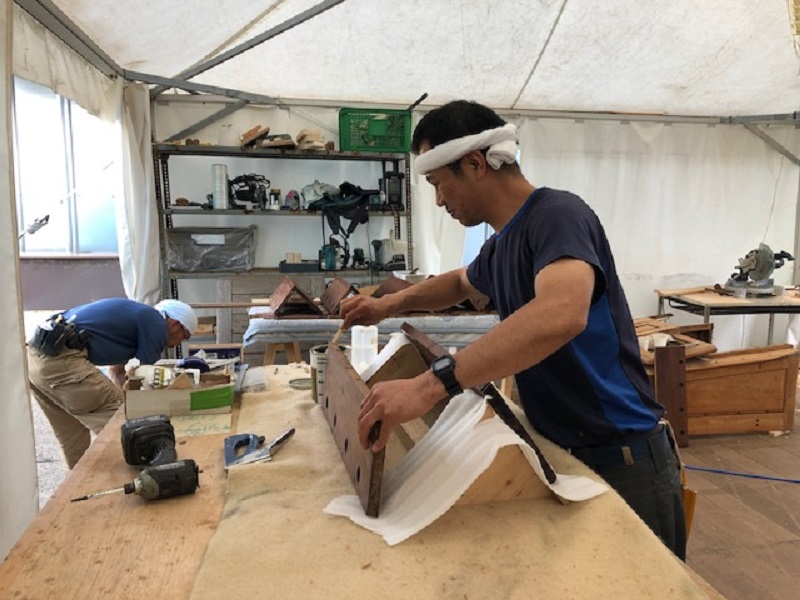
Kawashima is assembling the main stairway.
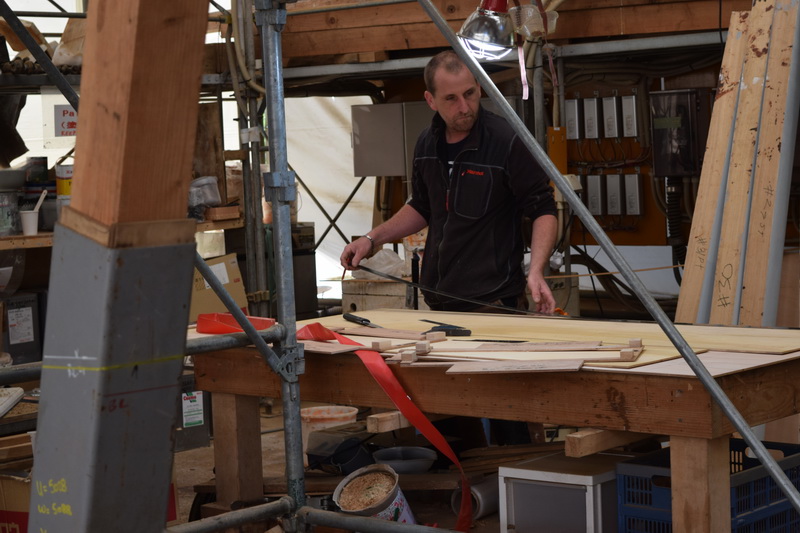
Ben has begun working on the interior ballast. There were five tons of lead ingots in Cynara’s bilge before. We’re placing the internal lead under her tanks at the bottom of the bilge.
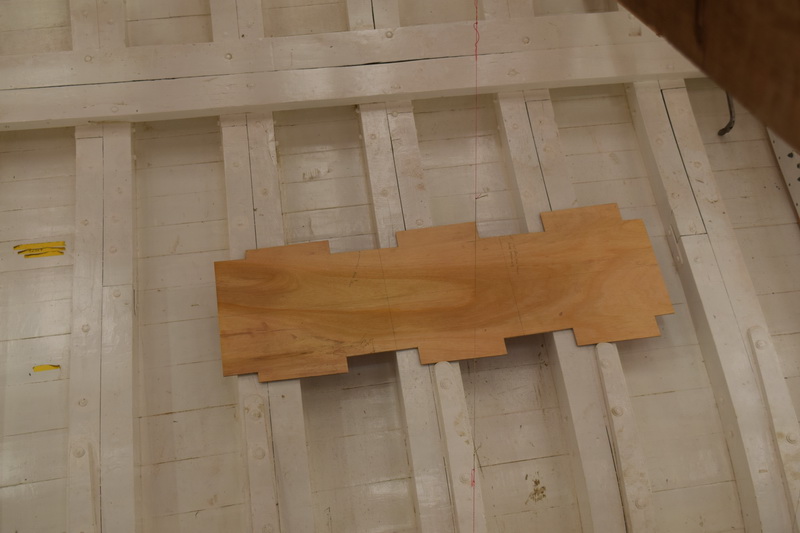
To use the space most efficiently, we are casting lead blocks that will fit these spaces and not take up any more space than necessary. We made tapered wood patterns (above and below) so that the lead castings will fit without having to adjust the heavy blocks on site.

Friday, May 17, 2019
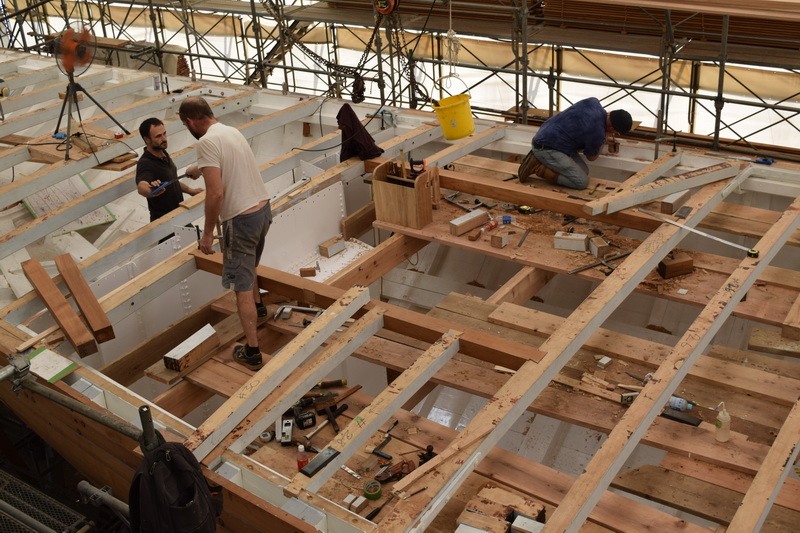
Michael, Lewis, and Richard are continuing to fit the beams. The two carlings that create the opening for the main deckhouse are in (running fore and aft between the beams, with shorter deck beams (half beams) on either side. The carlings are made of teak instead of the oak that is used for the deck beams because teak doesn’t distort as much, and the carlings need to stay straight.
Monday, May 20, 2019
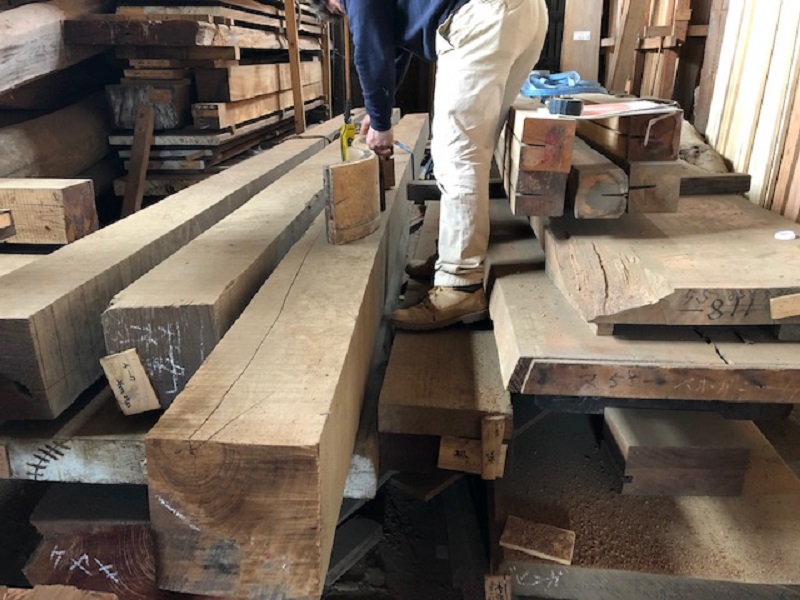
Paul, Matsui and Takamiya went to try and find some teak material that can be used to replace the circular sail locker hatch.
Tuesday, May 21, 2019
It poured rain all morning, and we found there were some minor leaks in the tent. We’re replacing the roof next week, and we hope it will be finished before the beginning of the rainy season, which will begin next month.

Most of the team on deck is focused on fitting the carlings.
Wednesday, May 22, 2019
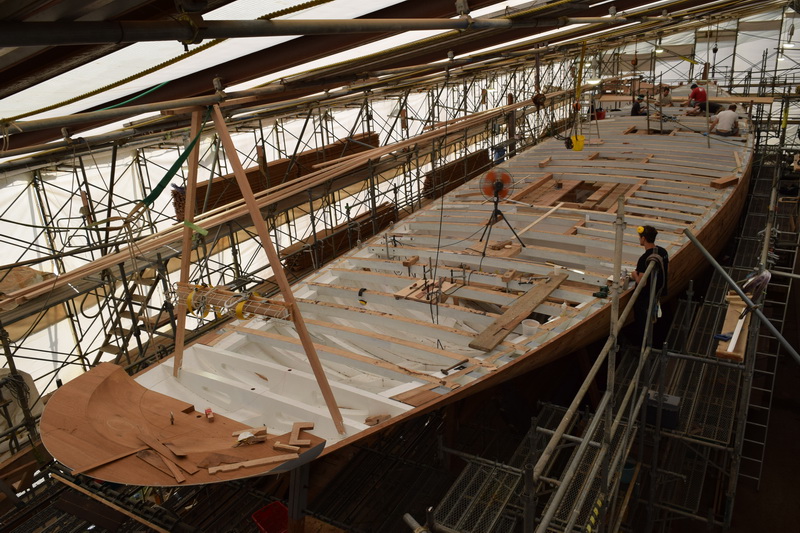
The amount of work that’s been done on the beams is clear from this overhead shot.

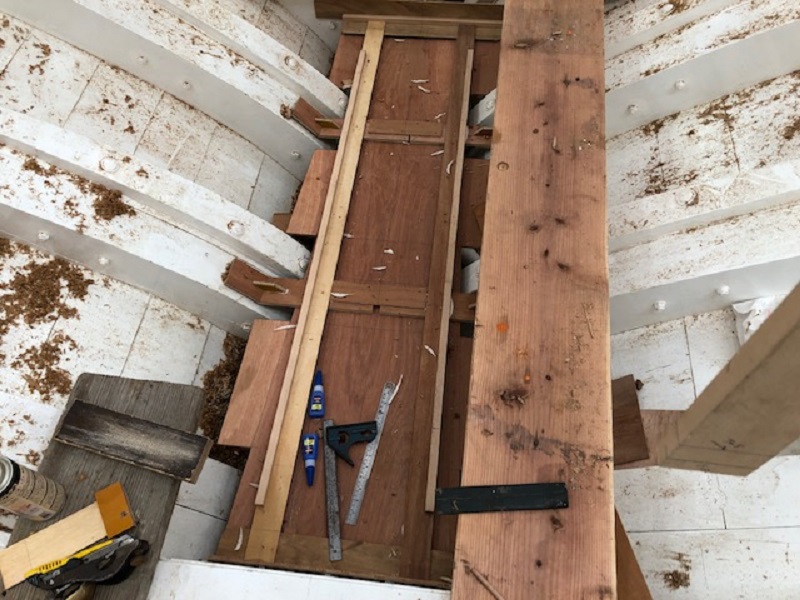
Ben is still working on the patterns for the interior lead ballast. We hope this will limit any trimming to make them fit.


